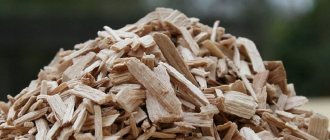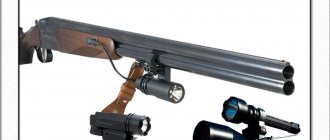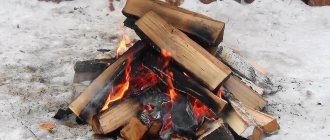After the acclimatization period is completed, the fish feels good closer to the surface of the water, where it is easier to get food. Therefore, the bite of white fish increases as soon as the barometer creeps up.
One of the biggest troubles when fishing is the lack of bite. Every fisherman wants to know why this happens. If we discard subjective reasons, such as illiterately configured equipment, poor bait play, incorrectly chosen bait, and many others. etc., then natural conditions remain, including pressure.
- Fishing at low and high pressure ↓
- Optimal atmospheric pressure for fishing ↓
- Reasons for changes in fish behavior ↓
- Influence of atmospheric pressure depending on the season ↓
- Spring bite ↓
- Summer bite ↓
- Autumn bite ↓
- Winter bite ↓
Atmospheric pressure is the pressure of the atmosphere located above a specific area of the earth's surface. There is an opinion that the optimal pressure for fishing is 760 mmHg, but this is completely incorrect. How many mmHg (hereinafter referred to as Hg) is actually considered normal and leads to an increase in the number of fish bites.
Any piece of land has a different height above sea level, therefore it is different, and this is worth taking into account. So, for the middle zone, the norm is 760 mm, but for Western Siberia the normal pressure is much lower - only 746 mm. The pressure also varies during the day by 1-3 mm, but the fish practically does not react to this.
The fish reacts to its more significant fluctuations.
Table. Fishing information on the influence of barometer values on a favorable outcome in fishing for peaceful and predatory fish.
You should know that the adaptation period for each fish species is different:
The main reasons affecting fish biting
The level of prey activity directly depends on what is happening not only in the aquatic environment, but also in the near-aquatic environment. For experienced fishermen, determining the reason for the lack of a bite is not so difficult, but for beginning fishing enthusiasts, it is recommended that you familiarize yourself with the most common ones.
Fishing:
Natural:
Most often, fishing is done at dawn. This is especially true in the summer, since in the morning the water is not yet warmed up under the bright rays of the sun, and the fish swim closer to the surface.
Fishing at high pressure
High blood pressure affects fish in a completely different way. The predatory fish becomes lethargic and sinks to the bottom. Predators do not like the sun, and in the summer, with high pressure, it is always clear and warm. Consequently, predatory fish are affected not by the increased pressure itself, but by the weather conditions associated with it (clear weather, increased air and water temperatures).
At high pressure, white fish are caught well. It becomes active, and if the fisherman is determined to get a good catch, he needs to develop tactics for catching this particular type of fish.
At elevated atmospheric pressure the most mobile are:
- Ide
- Bream
- Roach
- Carp
- Chekhon
- Asp
- Chub
There are exceptions among predators. At high blood pressure the following are quite active:
Most often, fishing is done at dawn. This is especially true in the summer, since in the morning the water is not yet warmed up under the bright rays of the sun, and the fish swim closer to the surface.
It is important to understand that:
- The factor of water heating due to sunlight has a much greater effect on fish than changes in atmospheric pressure.
- It is very difficult to take into account all the factors; there are many of them, and not all of them can be applied to a specific region.
- Each fisherman has his own rules for fishing in certain conditions.
Cloudflare Ray ID: 63a9c5656fb04c0d • Your IP: 195.64.208.251 • Performance & security by Cloudflare
In nature, everything is interconnected, including atmospheric phenomena. As mentioned above, atmospheric pressure determines the nature of the weather in general.
Fishing at low pressure
In fact, you can fish in any weather conditions and at any atmospheric pressure.
At low pressure it is advisable to catch predatory fish. Low pressure makes the fish passive. She goes to the bottom. This situation provokes predators to hunt. That is why at low pressure you can catch pike, burbot, pike perch, perch and catfish well. This observation is true when it comes to stable low blood pressure. With sudden changes, any fish becomes lethargic and you should not expect a rich catch.
If you don’t have a barometer at hand, you can independently determine that the pressure has decreased by some signs:
- The smoke from the fire spreads low and practically does not dissipate.
- Foam appears in the water near the shore.
If high blood pressure persists for several days, it is recommended to go fishing for peace-loving fish. The probability of catching a large predator is practically zero, since in most cases they simply “lie to the bottom.” Ichthyologists say that predatory fish do not tolerate sunlight and heat well, so they try to stay low on clear days with high pressure.
What are the signs that indicate rapid changes in blood pressure?
Since so much depends on pressure, every experienced angler should be able to understand weather conditions, including predicting changes in atmospheric pressure without the use of related items (after all, a barometer is not always at hand). Many lovers of this pastime go into nature with fishing rods for several days at once, but if crucian carp and bream are caught well today, this does not mean at all that the situation will be similar the next day.
Tips for fisherman: Spinning bait for asp in summer - Features of choice
Normal blood pressure can drop or rise quite quickly; such changes can be predicted by the following signs:
- early at dawn a very thick and dense fog appears;
- cloudy weather changed to sunny in just a few hours;
- the air temperature gradually began to increase (the nights also became warmer);
- very little wind or no wind at all;
- increased cloudiness;
- A large amount of foam began to accumulate near the shore.
Atmospheric pressure (let's shorten this phrase to blood pressure, although this is not very legitimate) has a tremendous impact on the well-being of the inhabitants of the Earth. Weather-dependent people feel weather changes especially powerfully, reacting sharply to pressure changes and often anticipating the onset of a cyclone.
The influence of blood pressure on fish behavior
Atmospheric pressure (let's shorten this phrase to blood pressure, although this is not very legitimate) has a tremendous impact on the well-being of the inhabitants of the Earth. Weather-dependent people feel weather changes especially powerfully, reacting sharply to pressure changes and often anticipating the onset of a cyclone.
Water is a much denser medium than air, so changes in atmospheric pressure in its thickness are almost imperceptible. For example, at a depth of 10 meters, the same amount is added to the standard pressure of one atmosphere (which we feel on the surface). That is, plus one more atmosphere, and not some measly tens of millimeters of mercury.
This dispels the myth that an increase in pressure compresses the swim bladder and the fish goes to the bottom, and a decrease, on the contrary, forces it to surface. Representatives of the ichthyofauna are not in a static position, changing their depth hundreds of times a day. They automatically release or increase pressure inside the swim bladder. That is, changes in pressure are commonplace for fish.
It would seem that with such introductory information, the state of atmospheric pressure should not affect fishing, but no! It influences, and how. Fish have sensory systems that are significantly different from ours. Ichthyologists believe that they are able to sense changes in blood pressure using the lateral line, swim bladder, and even other receptors, the purpose of which we still have no idea about.
That is, the fish feels changes in pressure, and the experience of many generations tells it: an atmospheric front is approaching, bad weather is coming, something needs to be done. Each species reacts to such signals in its own way: some go into intense gluttony, while others go to significant depths and hide in order to calmly survive the bad weather. Agree, it is much calmer at depth than at the surface, where waves crash and thunder roars.
What is atmospheric pressure?
As we know, the Earth rotates, and at the same time the location of the geomagnetic field changes, which entails changes in the atmosphere. Somewhere the atmospheric pressure on the earth's surface is higher, somewhere lower. As a result, areas of low (cyclones) and high (anticyclones) pressure are formed.
In summer, a cyclone brings with it a cold snap, in winter – a thaw, and an anticyclone – vice versa. Thus, atmospheric pressure has not only a direct, but also an indirect effect on fish biting: it also determines other weather factors.
The topic is interesting, but, unfortunately or fortunately, I haven’t read materials without the author’s signature or indication of the author’s full name for a long time. The 21st century is the century of personification.
Atmospheric pressure for fishing in winter
It is also worth touching on the topic of atmospheric pressure for fishing in winter. After freeze-up, the pressure in the reservoir does not change and does not depend on atmospheric pressure. Probably many people are familiar with the situation when, after drilling a hole, water begins to flow out of it. This indicates a pressure difference. But this only happens in “unpressed” reservoirs, where fishermen are extremely rare. Usually, a huge number of holes negates the isolation effect and the same principles as for summer fishing begin to work.
The effect of atmospheric pressure on biting has been known for quite some time. Many people who have this hobby have already experienced in practice the dependence of fish activity on the weather, including pressure. That is why, before getting ready to start a hobby, you should find out in advance what the weather will be like.
Optimal pressure for fishing
If you pay attention to atmospheric pressure, then the most favorable option would be a stable indicator that lasts for at least several weeks, but best of all - several weeks.
In addition, increased blood pressure has a good effect on the result, but only if it remains at the same level for a long period.
The optimal indicator is 750-760 mm. Hg Art. But this only works if a person is at zero level in relation to the sea. If the territory is located higher, then for every 10-11 m the pressure parameter must be reduced by 1 mm. That is why it is not possible to talk only about a single optimal indicator of pressure in the atmosphere.
Among other things, the weather also depends on pressure. For example, a low temperature causes a cyclone, and a high temperature, on the contrary, causes an anticyclone. Only with the help of a barometer will it be possible to calculate the probability of a bite depending on the purpose of the fisherman - large or small representatives.
Transition from clear weather to stormy weather
As for the air temperature, its change usually does not affect the bite. However, if the water temperature changes sharply due to a change in air temperature, this, as you already know, will affect your catch accordingly.
Tips for a fisherman: How to make a helicopter tackle for winter fishing - Choosing the best
If the water level in a reservoir drops sharply, it is better to postpone fishing, but a gradual decrease to a normal level will ensure a good catch. The same applies to a gradual increase in water to normal levels: at this time fishing in any way is favorable.
A sharp increase in water level usually leads to fish not biting well, since they often change their habitat and are difficult to track. In reservoirs with a weak current and a high water level, which is observed over a long period, the bite is the best.
If the water level in a reservoir constantly fluctuates, the catch is unlikely to be rich.
The water level in a reservoir, directly related to changes in the strength of the current.
Absence or presence of current and its speed
For fish living in such reservoirs, the appearance of a current means that a period of decreasing water levels is beginning.
In the coastal area. The fish press closer to the shore, where it is much easier for the angler to find them. The coastal zone is quite easy to navigate by the topography of the coast, by previously noticed landmarks, and by changes in the strength of the current from hole to hole. In the coastal zone there are many points with a pronounced change in the bottom topography, that is, many promising places where fish take refuge from the pressure of the water flow.
It is not necessary to assume that all fish in strong currents tend to the shore. The same bream and pike perch remain in their places and actively feed. But the difficulty of spring fishing in strong currents also lies in the fact that it is impossible to predict in what place and when the next gulley will appear. A washout in a strong current—it couldn’t get any worse.
Hello, guys! Write here your notes from experience about the effect of pressure on fish biting! I couldn’t find such a topic on the forum and had a desire to create one!
Andrianoo
Hello, guys! Write here your notes from experience about the effect of pressure on fish biting! I couldn’t find such a topic on the forum and had a desire to create one!
———- Message added at 11:45 ———- Previous message posted at 11:26 ———-
FORECAST FROM GISMETEO FROM 12/29/14. ———- I read that if there is NOT a SHARP drop in pressure, the bite of white fish worsens, but the predator’s bite becomes more active! And with a sharp change in pressure, the bite of any fish disappears altogether. Question: should the change in pressure described above be considered abrupt or not, and is it worth going fishing (after all, it takes 2 hours to get to Mozhai)? In general, the weather will change on December 31st, but will the fish have time to move away from the jump? Who thinks what? Help as much as you can.
But besides this, pressure also affects weather conditions - high pressure is caused by the arrival of an anticyclone, and low pressure is caused by the arrival of a cyclone. And then, depending on the goals (hunting for small or large fish), you can use a barometer to calculate the probability of success.
Seasonal influence of pressure on fish biting
It is somewhat unreasonable to consider the influence of blood pressure on fish behavior without taking into account seasonality, so let's pay attention to this factor:
- Spring . This period is characterized by frequent pressure changes. In early spring, increased biting is observed with the onset of thaws and increased pressure (that is, on fine sunny days). However, it must be taken into account that during this period, most of the representatives of the ichthyofauna living here are preparing for spawning, so the biting does not stop in any weather conditions. Spawned individuals usually lose feeding activity for some time. Before going fishing, you should also pay attention to the fishing restrictions that come into force due to spawning.
- Summer . The summer period is more stable in terms of pressure indicators (more often it is elevated), but on hot days it is better to transfer fishing to a cool time of day. In stable cool weather caused by a cyclone, you can fish consistently throughout the daylight hours. A sharp decrease in pressure, as a rule, marks a lack of bite.
- Autumn . The air temperature is gradually decreasing, precipitation is becoming more frequent, and the number of stormy days is increasing. A good time is Indian summer, when an anticyclone dominates, bringing clear sunny weather. The rest of the time, the atmospheric pressure is unstable, so it is impossible to predict the intensity of the bite. During periods of stabilization of pressure, you can rejoice at a good catch: the fish is preparing for a hungry winter and strives to “grow fat.” For example, pike take well in September even in rainy weather, but then its activity gradually fades until the first ice. Baits of animal origin are preferred, even for peaceful fish.
- Winter . The periods of first and last ice are the best for fishing, especially when accompanied by clear weather and stable blood pressure. In the deep winter, fishing is unpromising, with the exception of thaws, which during this period are brought with cyclones, that is, areas of low pressure. These days are especially good for catching perch and roach. The long reign of the anticyclone is marked by clear days accompanied by bitter frosts - there is nothing to do on the reservoir. If the thaw is accompanied by clearing and a decrease in pressure, the golden time begins for pike fish.
Optimal pressure for fishing
The average normal pressure is considered to be 760 mm.p.s. But this is provided that you are 0 meters above sea level. If the surface is higher, then with every 10.5 meters the mercury column readings should be lowered by 1 mm. Therefore, it is impossible to talk about any specific figures; each area has its own optimal atmospheric pressure.
Tips for fisherman: At what pressure do fish bite in summer - What to choose for fishing
But besides this, pressure also affects weather conditions - high pressure is caused by the arrival of an anticyclone, and low pressure is caused by the arrival of a cyclone. And then, depending on the goals (hunting for small or large fish), you can use a barometer to calculate the probability of success.
What fish to catch at high atmospheric pressure?
When atmospheric pressure rises and remains stable for some time, this means that the weather is warm and the water level is falling. Accordingly, the density of water increases and all the oxygen is closer to the surface of the water. Therefore, the fish becomes uncomfortable at the bottom and begins to rise upward in search of profit.
But this does not apply to all types of fish; in most cases, small peaceful fish behave this way - roach, bream, silver bream, sabrefish, ide, chub, asp, young perch and other types of white fish. Therefore, if you are interested in a certain type of small fish, you can safely go fishing with high blood pressure.
What kind of fish to catch at low pressure?
Low pressure is considered not very favorable for fishing. But those who are well versed in this matter know that with low pressure you can hit a big jackpot. The fact is that when atmospheric pressure begins to decline, this means worsening weather and the fish, sensing that something is wrong, begins to stock up on food with double force, which cannot be found at the bottom.
At this moment, all the fish are active and you can successfully fish. But this only applies to a slow decrease in pressure. If it drops sharply, then all the white fish are in a lost state and try to lie to the bottom. And then predators come out to hunt - catfish, burbot, pike perch and pike, which can more easily tolerate sudden changes in pressure and have already become adept at dealing with it. They take advantage of the availability of easy prey and bite well.
Pike: biting and atmospheric pressure
Pike is a predatory fish species and changes in pressure naturally affect its bite. This fish almost always has a good appetite, it eats an average of ten fish per day, 250 grams each, so there will be a bite any day, you just need to take into account some nuances.
Pike feels best at consistently low pressure. At this moment, all small and peaceful fish are in a suspended state, which is very beneficial for the pike. And if a fisherman wants to catch it, then this time is the most favorable for catching.
Optimal pressure indicators for fishing
There is often a statement on the Internet that the optimal value is 760 mm. Hg Art. (mercury column - in accordance with barometer readings). However, this is not entirely true: the optimal indicator is the average value characteristic of a given area. And it is determined by its position relative to sea level.
In other words, 760 mm. Hg Art. – this is the ideal position for the zero mark relative to sea level. And the higher you rise, the lower this figure is. Every 100 meters up relative to sea level gives minus 8-10 mm. Hg Art. from the base figure of 760 mm. Hg Art.
There is an opinion that a gradual decrease in pressure has a beneficial effect on biting. And it’s hard to disagree with this: often, on the eve of the onset of a cyclone, representatives of the ichthyofauna experience real gluttony. However, a sharp decrease, as well as an increase in blood pressure, is perceived negatively by the fish: it needs some time to adapt to new conditions.
The worst thing is if the reservoir is located on the border of atmospheric fronts. These are guaranteed pressure surges accompanied by rampant elements. It is better to wait out this period: in such weather there is little pleasant in the fishing process itself, and the fish, stupefied by such weather vagaries, are not too eager to get hooked.
Biting with high blood pressure
High blood pressure that persists for several days usually has a beneficial effect on the appetite of carp species. They are more thermophilic than most predators, and the arrival of an anticyclone during the period of open water, as a rule, marks the arrival of warm sunny days.
But there is one “but”: even heat-loving carp does not tolerate the suffocating heat. If the anticyclone has settled seriously and for a long time, a period of heat begins, the water becomes very hot, which is accompanied by a deficiency of oxygen. At this time, it is better to postpone fishing to the early morning, evening or night, since the heat established due to high pressure kills the appetite of even white fish. During the day, she prefers to rest at great depths.
But the predator does not favor increased pressure in principle: anticipating the onset of an anticyclone, it becomes sluggish and inactive. The same pike seeks to hide in the thickets, from where it occasionally attacks prey passing by.
The long dominance of the anticyclone in the summer can kill fish. The oxygen content in water reaches critical values, and a significant contribution to this is made not only by the heat itself, but also by the process of decay of aquatic vegetation and other biological remains, which is accelerated because of it. Long-term summer heat is especially dangerous for the inhabitants of small, stagnant bodies of water: deprived of the opportunity to go to depth, they simply die.
The adaptation reserves of many species are truly amazing: for example, crucian carp buries itself in the mud and experiences difficult times in semi-anabiosis. But, naturally, even he is not interested in food and will not peck.
Fishing with low blood pressure
With a decrease in atmospheric pressure, the predator's bite becomes more active - this is noted by all experienced fishermen. It is believed that natural mechanisms are triggered, encouraging them to get more food in anticipation of possible bad weather. And for burbot, a decrease in pressure and the associated cooling is generally the ideal weather. This is understandable: after all, freshwater cod is one of the most cold-loving inhabitants of our reservoirs.
But carp species do not really like a decrease in pressure, especially a sharp one. Even the upper-water small fish tend to go to significant depths and wait out the bad weather there. However, after a few days of stable low blood pressure, the whitefish becomes more active and begins to feed according to its usual program, without any special surges or declines.
Predators, in principle, are less dependent on weather conditions than peaceful fish. Perch, pike perch, and pike rarely lose their appetite for a long time even with increased blood pressure. Sometimes they don’t even care about sharp jumps in the mercury column, especially when it comes to the spring pre-spawning period.











